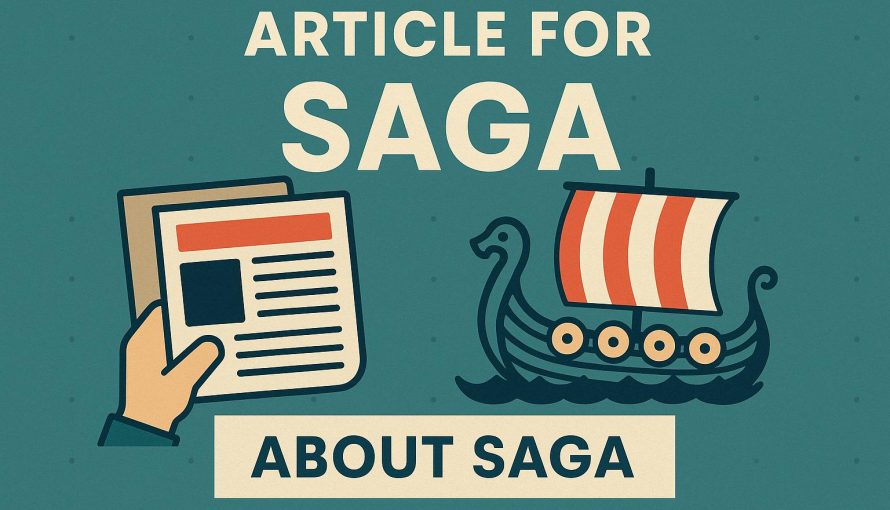Saga

Origins and Definition of a Saga
In literature, the term saga traditionally refers to a narrative or story, most commonly associated with medieval Iceland and Norway. Sagas are prose narratives that recount historical events, often involving significant figures of the time. These stories blend historical facts with legendary elements, capturing the cultural and social dynamics of the region from the 9th to 13th centuries. During this period, sagas served as the vessel through which the oral traditions and histories were preserved and passed down, allowing them to become an integral part of the collective memory of Norse culture.
Characteristics of Sagas
Sagas are generally characterized by their detailed accounts of family histories, genealogies, and personal stories. They often focus on the lives and exploits of heroes, exploring themes such as honor, revenge, and the supernatural. Written in a straightforward narrative style, these stories include direct speech and rich descriptions of settings and characters. The writing style of sagas is notably free from excessive embellishment, instead using concise prose that allows the inherent drama of the events to unfold naturally.
The characters in sagas are often depicted as larger-than-life figures who embody the ideals and virtues of the society in which they lived. Honor and reputation are central to many of these stories, reflecting the importance of these values in Norse society. Revenge, a common theme, underscores the significance of personal and familial honor, as characters often go to great lengths to right perceived wrongs.
Types of Sagas
There are several subcategories within the genre of sagas, each with its unique focus and style:
Íslendingasögur (Sagas of Icelanders): These focus on the lives of Icelandic settlers and their descendants, depicting a mix of historical and mythical narratives. The events depicted often reflect real historical occurrences, such as the settlement of Iceland or notable blood feuds, intertwined with elements of folklore.
Konungasögur (Kings’ Sagas): These narratives recount the lives of Scandinavian kings, providing both historical accounts and embellished tales of their reigns. They often serve as semi-biographical records of historical rulers, chronicling their achievements, lineage, and the larger political landscape of their time.
Fornaldarsögur (Legendary Sagas): Set in a distant past, these sagas include more fantastical elements, such as mythical creatures and magic. Such tales draw heavily on pre-Christian myths and oral tradition. While less historically accurate, they offer insights into the way people of the era perceived the world and understood their place within it.
These distinct types of sagas showcase the diversity within the narrative tradition of medieval Scandinavia, each contributing to a broader understanding of Norse culture and storytelling practices.
Historical Context and Preservation
Most sagas were composed during the 12th to 14th centuries, a period that reflects the growing literacy and cultural consolidation in Iceland and Norway. This era witnessed the creation of several key manuscripts that preserved these oral traditions for future generations. The writing of sagas was part of a larger movement toward documenting the histories of the Scandinavian peoples, as well as their mythical and cultural heritage, at a time when the transition from oral to written records was gained momentum.
Due to their historical significance, many sagas were meticulously preserved in medieval manuscripts. These manuscripts now serve as critical resources for historians and scholars seeking to understand the societal structures, values, and beliefs of the time. The preservation efforts have continued into modern times, with digitized collections and scholarly compilations ensuring the sagas remain accessible to contemporary and future audiences.
One modern example of such an effort is SagaDB, an extensive collection organized to preserve and promote the understanding of these historical texts. Resources like SagaDB are invaluable in making the vast richness of saga literature available and comprehensible beyond academic circles, thereby fostering a greater appreciation of this unique literary tradition.
Importance of Sagas
The cultural and historical value of sagas extends far beyond their initial creation. Sagas offer tremendous insights into early Icelandic and Norse societies, serving as windows into the values, social structures, and worldviews of these communities. They provide clues into the daily lives and struggles of historical figures, blending fact with fiction in a manner that captivates and educates.
Moreover, sagas highlight the interconnectedness of myth and reality, illustrating how societal norms and ideals shaped personal narratives and vice versa. Despite being written centuries ago, sagas continue to influence modern literature and storytelling. Their tales of human conflict, resilience, and triumph resonate across time, offering timeless narratives that address universal themes still relevant today.
Sagas are more than simple historical records; they are complex works of art that exemplify the richness of human experience throughout an intriguing historical era. Their narratives form an invaluable part of the world’s literary heritage, providing endless avenues for exploration in terms of literary analysis, historical research, and cultural understanding. In this way, sagas have transcended their original context, influencing a variety of media and inspiring countless adaptations across various platforms.
The legacy of sagas endures, reflected in their ability to both educate and entertain. They remain one of the most significant contributions of medieval Scandinavian culture to global literary traditions, underscoring the power of storytelling to endure and resonate profoundly across different contexts and eras.